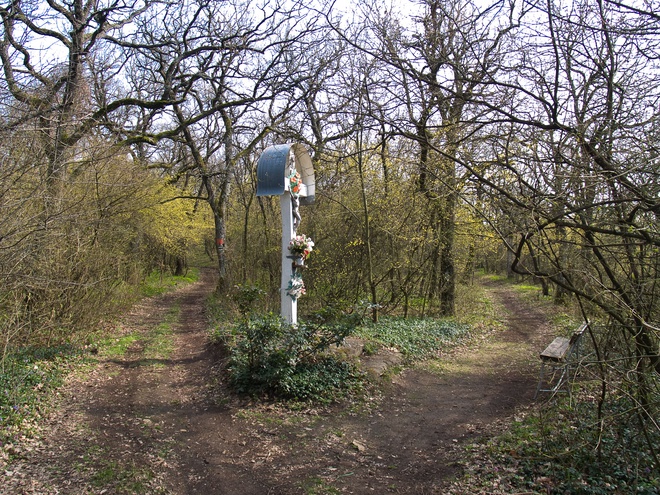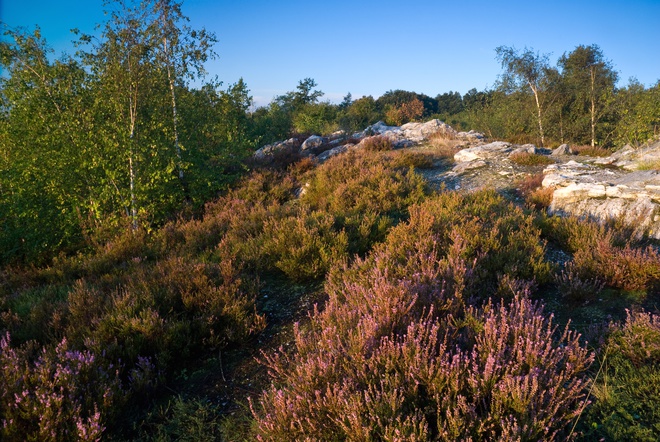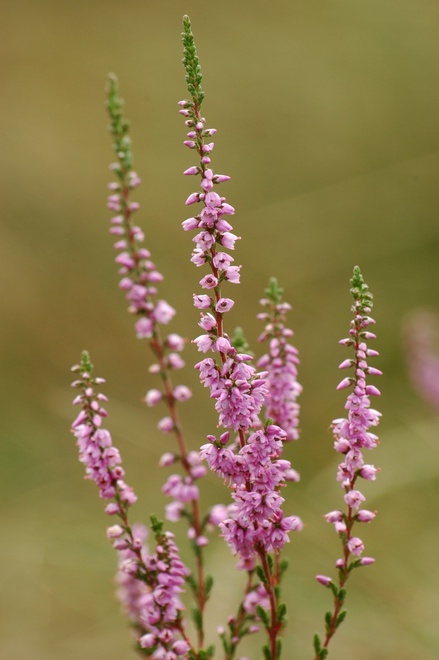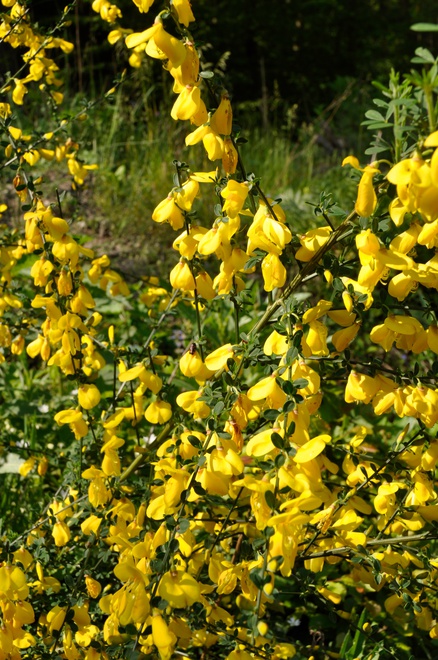Heats
Heaths are to be found in the vicinity of the municipality of Ladice, as well as in other areas at the border of the Tribeč Mountains. These are interesting covers consisting of common heather (Calluna vulgaris), which forms small shrub communities on the acidic quartzite rocks. The rocks contain only minimal amounts of lime and other nutrients. The thin soil tends to dry out, there is almost no topsoil; rocks are protruding from the soil or appear as rock formations. Vegetation grows only in the cracks and slits containing only a minimum of soil. The climatic conditions are unfavourable to extreme, which complies with the requirements of heath.
Station No. 22 is located on the green marking (5129), between the municipalities of Oponice and Ladice crossing the stations of the Kostoľany educational trail Nos. 4–9. We recommend the route from Sedlo pod Gýmešom (station No. 9). From the crossing of the green and yellow marking we continue through a forest following the green marking, to the southeast, to Bielý kríž (White Cross) and then slightly descending to a clear ridge, which leads to a saddle with a crossing of forest roads. The green marking continues on a flat ridge to the border of a forest with tourist sign post and the local name Vinohrady (Vineyard) at 334 MASL, which at the same time represents station No. 22. Time: 27 min., in the opposite direction 32 min., length: 2 km, medium challenging.

Heath forms small shrub; its Latin name has developed from the Greek verb kallynein ‘to cleanse, to sweep’. Although it has been used as material for brooms, it is a honey-bearing plant. Heather honey has not been highly valued. However, it is used in healing as a diuretic; it has a sweating, sedative and anti-inflammatory effect. Heather flowers at the end of summer. If it dominates the heath biotope it forms strikingly large pink surfaces. It is an interesting experience to see flowering heaths.


Heaths belong to the species-poor vegetation covers. Among the other few species able to endure the extreme conditions, we find wavy hair-grass (Avenella flexuosa). It grows on every acidic and thin soil, on any sea level. It is to be found in the lowland as well as in the alpine zone of larger mountains. Together with heather it forms a mosaic of shrubs and grasses. Other acidophilic plants may enrich the heaths, for example sheep’s bit scabious (Jasione montana) or hairy greenweed (Genista pilosa). On moister and shadower spots we may find European blueberry together with heather (Vaccinium myrtillus). Its fruits ripen only during favourable years and the harvest tends to be rather poor. Common broom (Sarothamnus scoparius) cannot be overseen due to its higher growth. His name as well has to do with a broom (saron in Greek and scopa in Latin). The common broom forms continuous covers of shrubs, similar to those of heather, but has yellow blossoms and blooms in May. In the past it has been planted by the foresters to provide supplementary food for the game, because it has green sprays even in the winter. Therefore we may doubt whether it originally grew on many sites. It also has many medicinal effects; for example, it was used to cure a rabid dog bite. Its blossoms were used as colour and from its shoots were made brooms. Be careful, the plant is poisonous!

Heaths are considered a natural ecosystem on rocky or sandy sites. However, they spread as substitute vegetation after the original oak forests disappeared and were inflicted by the pasturing of sheep and goats. Litter was gathered here in the past as well, which reduced the amount of nutrients even more. The forest thinned gradually and nutrient-poor pastures, the heaths appeared. Also fires might have an influence on the spread of the heaths, as heather covers were able to regenerate and spread. Apart from the Tribeč Mountains, heaths occur in smaller numbers as well at Považský Inovec, in the Little Carpathians and in the White Carpathians. They appear also in the acidic sands of the Záhorská Lowland. Independent biotopes are the heaths in the subalpine and alpine zones of larger mountains, as for example on the ridge of the Low Tatras. Heaths have been inscribed on the list of important European biotopes on grounds of their uniqueness.